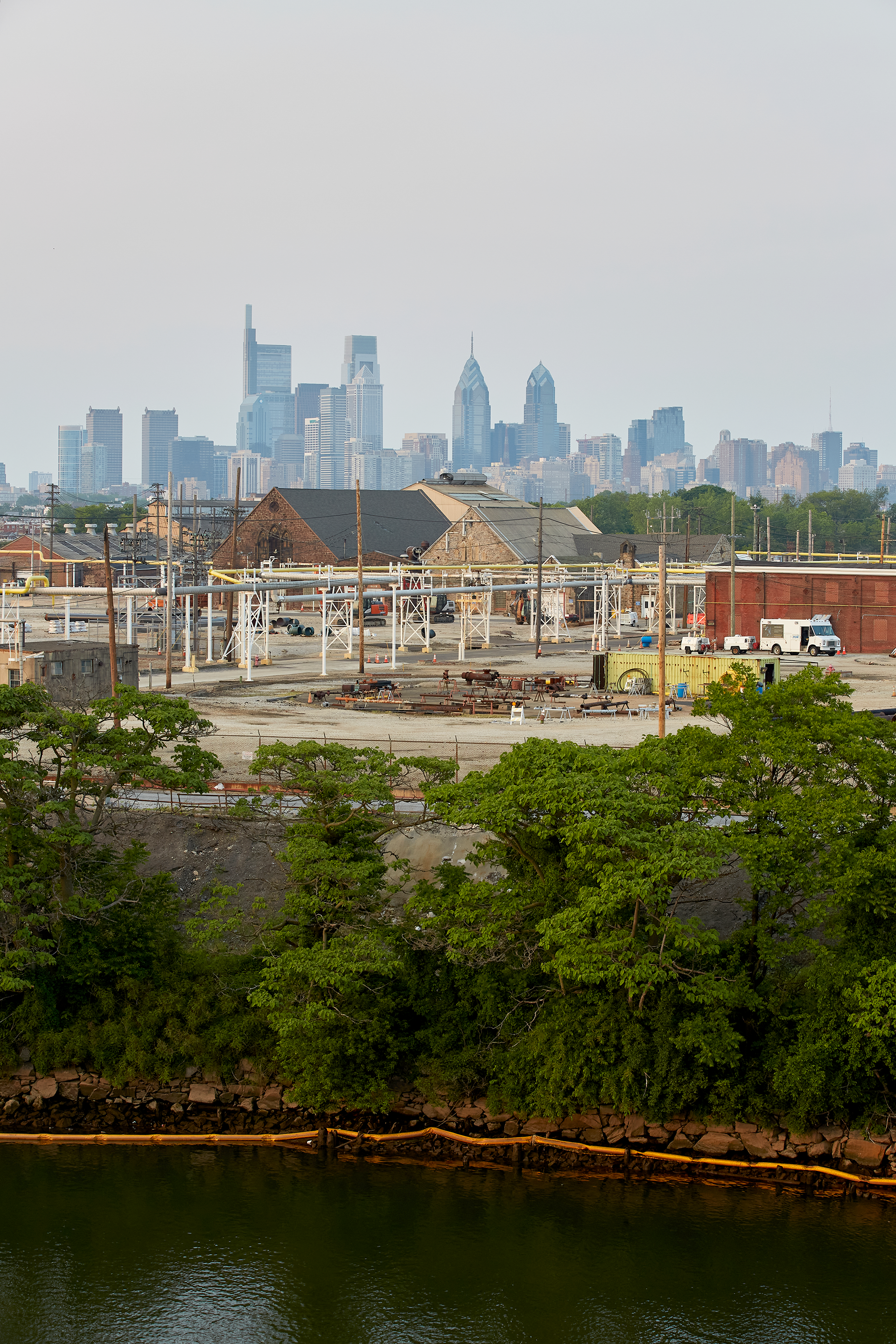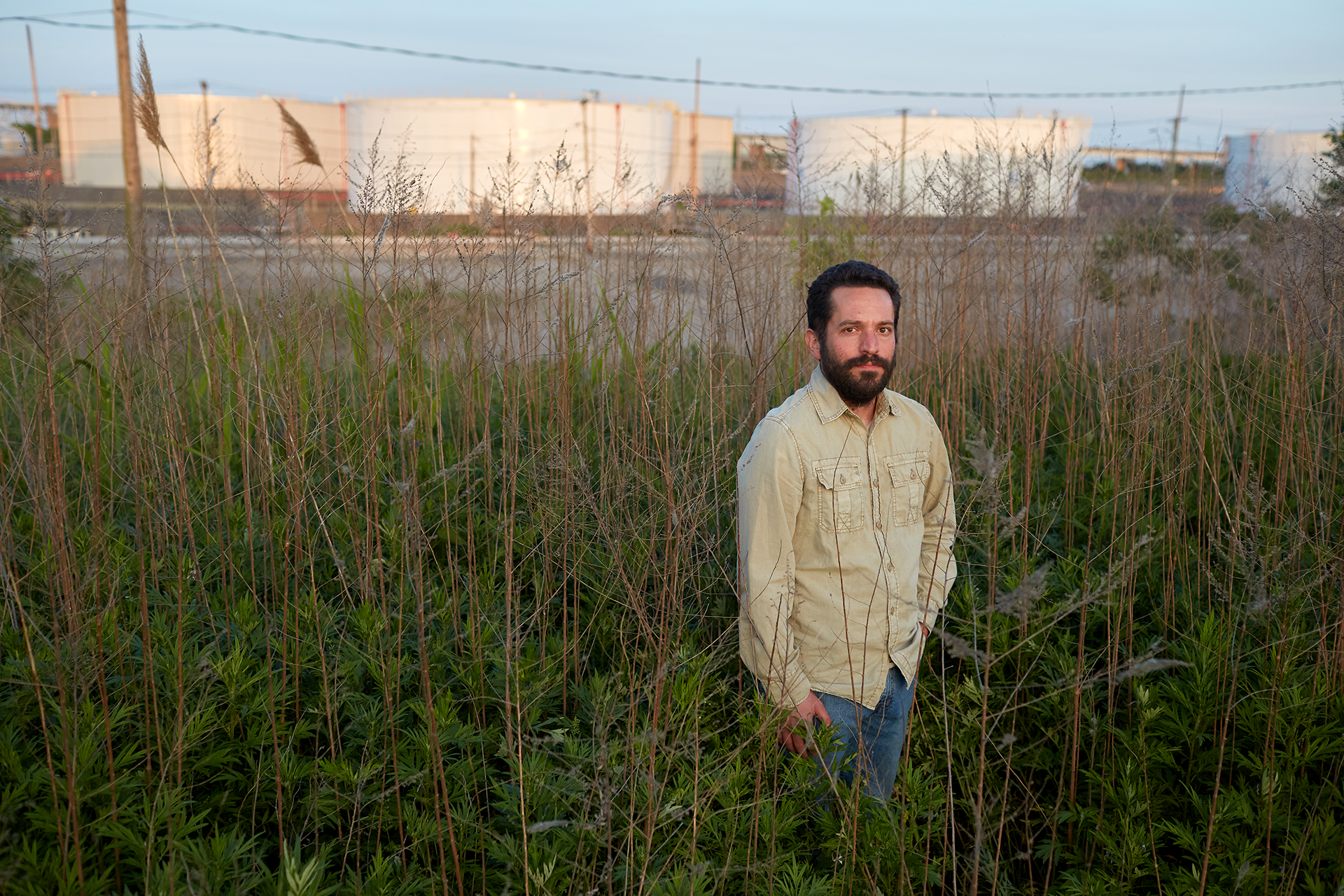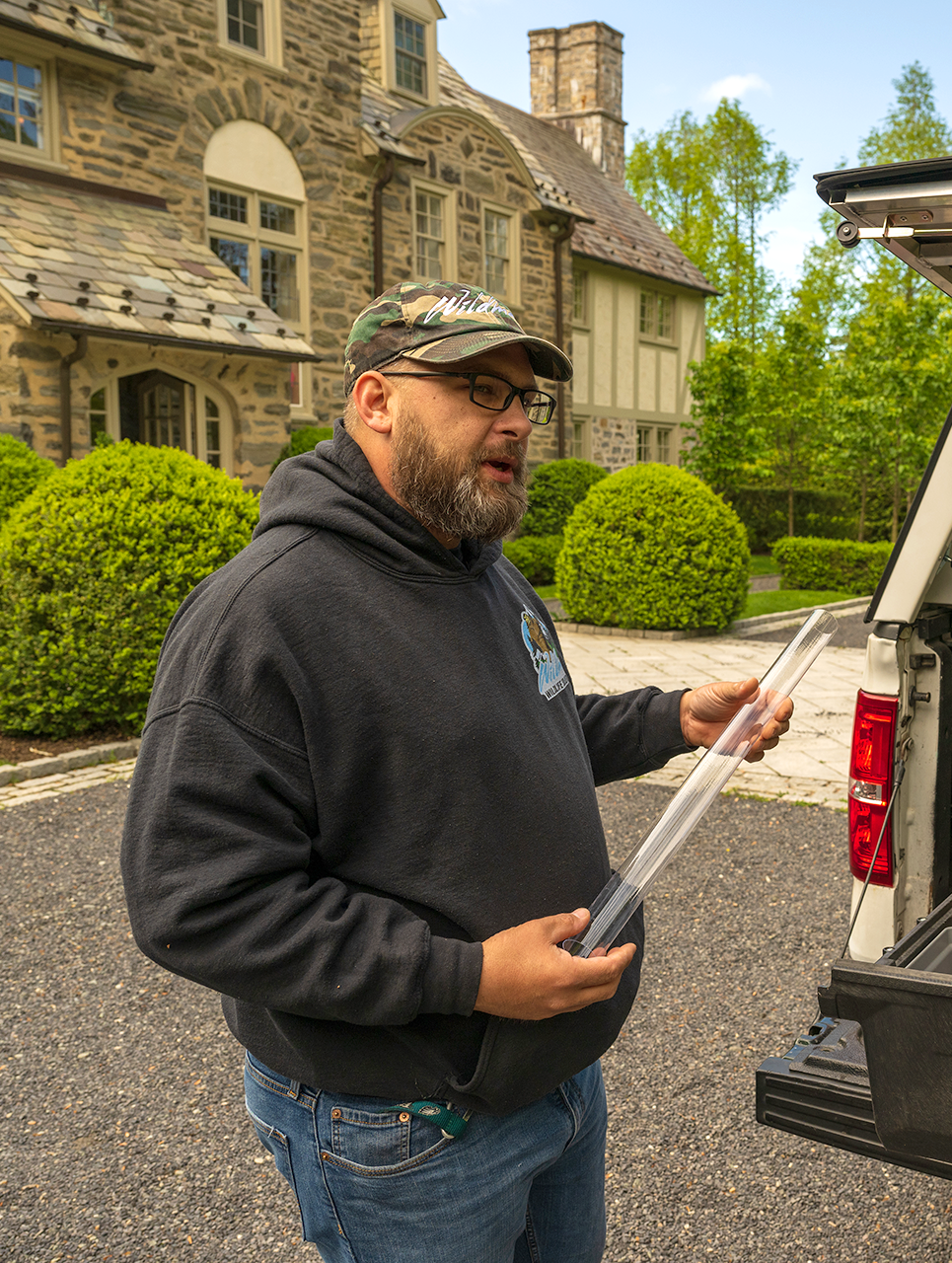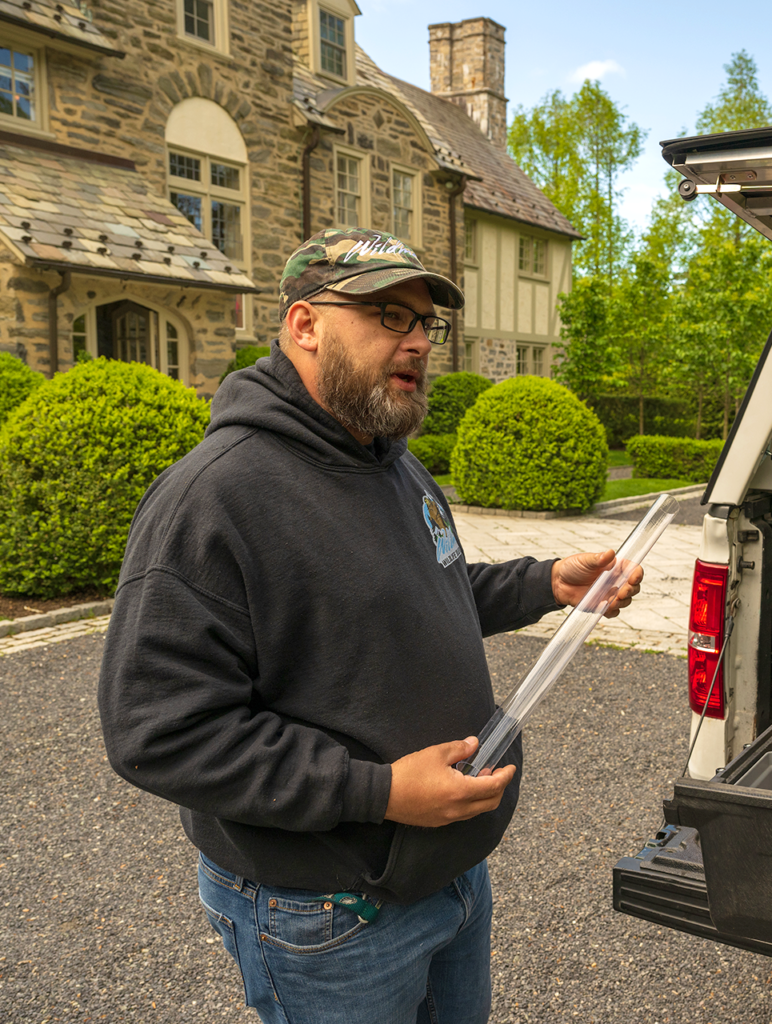In the 340 years since Philadelphia’s founding, the city’s landscape has constantly shifted, as waves of development and redevelopment shipped out with the old and in with the new.
Unfortunately, on many occasions across the city, transitions went terribly wrong.
Consider Logan Triangle, a 35-acre site in North Philadelphia where developers filled in a creek bed with ash and cinder in the 1920s, then built entire neighborhoods over it. Half a century later many were sinking, requiring the buy-out and demolition of nearly 1,000 homes and devastating the community.
Miles away on the far southern end of the city lies Eastwick, a neighborhood where residents have battled for decades with dangers from the long-shuttered Clearview Landfill Superfund site, along with floodwaters from the adjacent Cobbs and Darby creeks.
But recent years have brought Philadelphians face to face with its latest and largest redevelopment challenge: the former Philadelphia Energy Solutions oil refinery, a 1,300-acre site hugging the banks of the Schuylkill River on the southern half of the city, where heavy industry has reigned since the 1860s.
As chronicled in Grid’s April issue (#167), a 2019 explosion at the refinery forced its closure and sale to new owner Hilco Redevelopment Partners, who is pursuing a plan to convert the site to a major logistics and life sciences hub it calls the Bellwether District. But running alongside plans for the land are questions literally hiding beneath its surface.
What toxic hazards do the site’s land, air and waterways hold? Could they harm humans and animals, now or in the future? And how thoroughly will those responsible for ensuring a safe cleanup act?
For Russell Zerbo, advocate for the environmental nonprofit Clean Air Council, plans so far are cause for concern.
“[Hilco is] clearly focused on the redevelopment of the facility, when they really need to be focused on the cleanup,” he claims.
By redeveloping a 150-year-old former refinery, this transformational project inherently improved the surrounding environment on the day of acquisition.”
— Amelia Chassé Alcivar, executive vice president of corporate affairs for Hilco
But Hilco counters that such concerns are unwarranted. Company representatives note it has no plans to build residences on the site. The city’s air is cleaner without the ongoing refinery operations, they argue, and they say they are working with regulators to ensure a safe redevelopment.
“By redeveloping a 150-year-old former refinery, this transformational project inherently improved the surrounding environment on the day of acquisition,” Amelia Chassé Alcivar, executive vice president of corporate affairs for Hilco, wrote in a statement. “Through our extensive remediation and sustainable approach to redevelopment, we are ensuring that this 1,300-acre site will be transformative for the environment and quality of life in South and Southwest Philadelphia.”

A complicated cleanup,
a toxic alphabet soup
Care to take a peek under the contaminated hood of the former PES site? Just how much time do you have?
More than 150 years of heavy industry at the site have led to the creation of tens of thousands of pages of environmental records, many created after 2003, when former owner Sunoco entered into an agreement with the U.S. Environmental Protection Agency and other regulators to conduct a large investigation and cleanup at the site.
On a webpage created by Evergreen Resources Management, Sunoco’s corporate subsidiary for cleanups, scores of documents chronicle contamination spread across 11 distinct areas within the site’s vast acreage, including tank farms where petroleum and other products were stored, impoundment and chemical storage areas, and the aquifer underlying the entire site.
Complicating matters is a concurrent cleanup effort undertaken by Hilco, which holds responsibility for all spills and contamination since 2012, and which houses its own separate repository of documents online.
James Mullison, a West Philadelphia resident who by day works as an Amtrak engineer and by night sifts through the mountains of cleanup materials as a volunteer for environmental organization Philly Thrive, says it’s enough to make anyone dizzy.
“It’s a massive amount of information and truly daunting, even for folks that have a technical background,” Mullison said.
Still, certain concerns have bubbled to the surface. Environmental advocates, regulators and summaries from the document libraries call particular attention to benzene, a cancer-causing compound that wafts off of petroleum products and into the air, as well as lead, one of the most harmful substances found in the modern world and a common gasoline additive until it was phased out late last century.
Zerbo also notes a toxic “alphabet soup” of other petroleum-connected contaminants at the site, such as toluene, ethylbenzene and xylene, which, when combined with benzene, are referred to collectively as BTEX.
Mullison and Zerbo are both watching intently as Hilco and Evergreen engage with regulators on the investigation and cleanup of all of these toxic substances. Under a joint regulatory program, the Pennsylvania Department of Environmental Protection (DEP) is serving as lead overseer of the cleanup, with other state and federal agencies like the EPA, U.S. Army Corps of Engineers and the PA Fish and Boat Commission riding shotgun.
But both Mullison and Zerbo remain concerned that an expedient redevelopment of the site will take priority over a proper cleanup. Even though investigation and contamination of the 1,300-acre site is ongoing, nothing precludes Hilco from starting to build the massive warehouses they envision for the site if the City issues construction permits, according to the DEP.
Indeed, Hilco originally planned to begin vertical construction on the site early this year, a timeline that it has now pushed to the back half of 2023. Mullison worries about what might get left behind in the dust.
“With Hilco being very persistent about an aggressive construction schedule … is that holding us back from a real remediation?” he asks.
But Hilco counters that starting redevelopment and remediating the site are not mutually exclusive. The company notes Sunoco has been performing some remediation of the site, such as groundwater cleanup, for decades, and will likely be doing so for decades more. Construction doesn’t interfere with those activities, Hilco says.
“There isn’t a reason why we can’t develop above it,” a company official told Grid.
[Hilco is] clearly focused on the redevelopment of the facility, when they really need to be focused on the cleanup.”
— Russell Zerbo, Clean Air Council
Lead in the earth
There are two big problems with lead.
One, it’s extremely toxic. And two, once it contaminates soil, it doesn’t break down or really go anywhere, leaving a persistent long-term health risk.
In one of its first and most significant moves after purchasing the site, Hilco in 2020 released a plan for how it would address massive amounts of soil contamination at the former refinery.
To summarize: bury it.
Swiftly approved by regulators, Hilco’s plan is to redistribute soil across the site, moving clean or less-contaminated soils on top of those that are highly contaminated by lead and other substances. When paired with new additional barriers such as building foundations, parking lots and roadways, the redistribution of soil effectively encapsulates the worst sites of soil contamination to standards acceptable by law for nonresidential areas.
Hilco has not yet executed the plan, officials said. It has instead spent the past four years deconstructing massive amounts of holding tanks, pipelines and other fossil fuel infrastructure, then investigating the soil underneath to further inform the redistribution plan. The company says that, once executed, the plan will have an additional benefit of lifting all areas out of the floodplain.
But one key limitation is that, at present, Hilco is only working to achieve contamination levels in surface soils acceptable for industrial use — which is a less demanding standard than for residential or recreational uses. Because such uses are currently deed-restricted at the site, according to the DEP, Hilco would have to take additional action to make the site safe for publicly sought uses like the extension of the Schuylkill River Trail or other recreational areas.
There is no indication so far that Hilco intends to do so. However, the company suggested to Grid it has not written off any such possibilities. It added that it remains generally supportive of open space in the area, issuing a letter in February to U.S. Department of Transportation Secretary Pete Buttigieg expressing support for a proposal to extend the Schuylkill River Trail from Bartram’s Garden to Passyunk Avenue — but off-site along the river’s western bank.
“While there are significant deed restrictions on the site that we inherited upon our acquisition, we are committed to working with our community partners and all stakeholders to determine how The Bellwether District can best integrate with the South and Southwest Philly community,” Alcivar said.

Benzene in the air
Perhaps the greatest potential danger to public health from the former PES site is one that travels through the air: the prospect of cancerous benzene compounds kicking up into wind and out into adjacent residential neighborhoods.
It’s a threat that has persisted for decades, probably lifetimes, in South and Southwest Philly neighborhoods surrounding the former PES site, as it has for dozens of other “fenceline” communities located near petroleum sites across the country.
In 2018, the EPA implemented a new rule that required such refineries to monitor for spikes in benzene levels and seek out sources of high emissions. Data analyzed by the Environmental Integrity Project (EIP) the following year found that the PES site had the highest benzene concentrations among more than 100 refineries, adding to concerns long held in surrounding neighborhoods that air pollution from the refinery was driving up rates of illnesses like asthma and cancer.
But emissions from the site took on further mystery when EIP reviewed data for 2021 — two years after the refinery’s closure — and found high spikes of benzene levels that still ranked among the worst in the country. Similar unexplained spikes continued all the way through December 2022, when Hilco stopped monitoring benzene at the fenceline, arguing that it was unnecessary because refining operations had ceased.
Grid reviewed benzene data from the former PES site in the months and years leading up to the December cessation and found that although benzene levels did appear to be decreasing overall, strange spikes were still common. In the final month of monitoring, benzene levels at the site’s fenceline averaged 1.37 micrograms per cubic meter of air. That compares to an average of 0.50 micrograms taken at four different sites across the city in 2021. The EPA calculates that significant cancer risk begins when benzene is inhaled long-term somewhere between 0.13 to 0.45 micrograms.
In addition, benzene spikes at different locations along the fenceline in the four months leading up to the cessation of air monitoring averaged about 8.72 micrograms per cubic meter, hovering just below an EPA action level of 9 that requires active refineries to investigate the source of potential leaks. It also represented an upward trend over months prior.
In an email, Hilco pushed back on this analysis, saying it was not “scientifically sound” to compare average fenceline levels from the site to other locations in the city or the EPA’s cancer risk measurements.
“The Bellwether District site is located in an industrial corridor with active industrial sites in near proximity,” the company wrote, maintaining that “the former PES refinery’s benzene concentrations in outdoor air at the site are consistent with concentrations in other areas of Philadelphia and in other urban areas around the country.”
New analysis later this year might shed new light on the question. Sheila Tripathy, a senior research scientist at Drexel University, will be working this summer with Philly Thrive to install dozens of new air monitors for benzene, lead and other contaminants in fenceline areas, which could provide new insight.
“With all of the news about benzene and it still being an issue even while the refinery was being decommissioned, we will try to get a sense of what if any emissions are still impacting communities outside of the refinery,” Tripathy said.
Looking forward, Zerbo points out that advocates also remain acutely concerned about the expected increase in delivery truck exhaust fumes, which also contain benzene, as the site develops into a logistics and warehousing hub.

Who knows what’s in the water
Perhaps scariest to groups like Philly Thrive and the Clean Air Council are the unknowns. Hilco and Evergreen are both still working to fully investigate the site: where are all the chemicals, in what amounts, and where might they be heading next?
Water is a wildcard. The aquifer beneath the site is not used for drinking water, as chemical plumes from the former PES refinery mix in with myriad other sources of urban pollution, which long ago left groundwater unfit for human consumption. In some regards that places less importance on cleaning up the aquifer as would be the case in more suburban or rural areas. But in other ways it potentially leaves risks overlooked.
For one, consider wildlife. A June 2022 report from Evergreen noted that it is “likely” chemicals from the site are winding up in the adjacent Schuylkill River as contaminated groundwater enters into it. Even still, Evergreen’s staff analyzed risks to species such as the marsh wren, peregrine falcon, sturgeon and northern red-bellied turtle and determined there would be no or minimal risks for various reasons.
The Clean Air Council filed comments criticizing the analysis. During their official reviews last year, the DEP, EPA and other agencies largely echoed their concerns. State regulators said the report failed to consider plant life, did not take sufficient samples of sediment in the river and in general did not adequately evaluate possible chemical pathways, among other critiques.
The EPA also pointed out various errors, including that the report’s authors did not evaluate risks to macroinvertebrates and also claimed that fish species in the river would be fine because their bodies metabolize the chemicals in question.
“The author(s) of these statements apparently are unfamiliar with a large body of research showing that it is exactly the metabolism … that leads to a wide variety of toxicity in exposed fish, such as DNA adducts, liver lesions and tumorigenesis, and toxic impacts on fish growth and reproduction,” the EPA wrote.
The finding holds additional importance because people eat fish found in the tidal Schuylkill.
Both agencies issued deficiency letters; Evergreen will now have to redo the reports. A company spokesperson said Evergreen is working on those revisions and noted that such back-and-forth is a “common part of the regulatory process.”
But the threat of additional chemical releases now and in the future also raise concerns.
Even as Hilco worked to break down and clean up the remnants of refinery operations over the past few years, new hazards emerged. A February update from Hilco noted several instances of spills as the company dismantled old equipment at the site, including an incident in October 2022 when a mixture of oil and water overflowed from a separating unit, traveled down a roadway, slipped through cracks of the bulkheads abutting the Schuylkill River and poured into it.
Zerbo says one of his greatest concerns with Hilco’s encapsulation strategy are exactly these types of events. With the majority of the site’s 1,300 acres set for impervious surfaces, he’s keyed in on the potential for future flooding, which Zerbo worries could disturb contaminants still held in the site’s soil and redistribute them into the river or surrounding neighborhoods. The same is true for groundwater: as the climate changes, so too could hydraulic conditions beneath Philadelphia, potentially pushing the aquifer into highly contaminated soils currently considered unreachable at the site.
Already, a map located deep within a June 2022 Evergreen report depicts a benzene plume migrating outside the site’s boundaries over the next 30 years and beneath Siena Place, a new development of luxury townhomes in Packer Park. Evergreen says that plume is actually the responsibility of the federal Defense Logistics Agency, and that it understands there are already measures to monitor and “mitigate” fumes from the plume in adjacent areas.
Still, Zerbo says he wishes the redevelopment plan at the site called for fewer impervious surfaces and more naturalized areas. Certain plant species can speed up the breakdown of harmful chemicals in soil and water, as well as limit soil erosion, runoff and flooding. Such practices are a hallmark of cleanups at other sites, like the Clearview Landfill and Ambler Asbestos Piles.
“The most responsible remediation plans are the ones that use bioremediation,” Zerbo says. “That would be the most protective of public health.”
The companies’ counter that they are acting responsibly and with flooding in mind. A Hilco official told Grid the soil plan is designed specifically to bury the most contaminated soils and ensure they aren’t subject to runoff.
“Existing, interim and future stormwater discharge will be monitored and approved by DEP,” Alcivar added. “New drainage infrastructure in the concept plan to manage water flows includes innovative measures such as new piping networks, retention basins and bioswales.”
Evergreen also said it was taking into account climate change and future flooding and drought conditions.
Plans and problems
In totality, Hilco and Evergreen paint a cleanup picture that looks like this: soil capping and building foundations will keep future workers protected from exposure risks, while continued water treatment technologies will clean and control contaminated plumes in groundwater. Newly elevated areas and stormwater management systems will keep flooding under control.
Whether such plans are deemed adequate is up to the regulators. As Hilco and Evergreen move forward with their environmental investigations and cleanups, they must regularly issue reports to the DEP and EPA for approval. Many recent attempts haven’t made the grade: in addition to Evergreen’s 2022 ecological risk assessment that the EPA said incorrectly analyzed risks to fish, the DEP also issued a long list of “deficiencies” for a second Evergreen report that sought to analyze how toxic substances could move throughout the site.
Hilco is also engaged in a back-and-forth with the agencies as it seeks to finalize cleanup plans for various contaminated areas under its purview.
Zerbo says he has been “very happy” to see the regulatory agencies keep a keen eye on the cleanup so far. The companies maintain it’s just the norm.
But Zerbo also notes that the whole process is mostly just about liability. Under the primary state law under which the cleanup is being conducted, Hilco and Evergreen are ultimately seeking a signoff that would declare their legal responsibilities fulfilled and offer protection from litigation.
Whether or not construction can proceed is a separate matter under the purview of the City, which is why Hilco is eyeing a groundbreaking in 2023 even though it may take years to get final approval for its cleanup plans. Technically, the regulators — the EPA in particular — hold authority to halt construction or operations for significant safety concerns, Zerbo says, but he views that as an unlikely option.
As evidenced by Philly Thrive and Drexel’s plans to install independent air monitors and the Clean Air Council’s watchful eye, Zerbo says the groups will continue pushing for the best outcome.
“The whole situation is so extreme,” says Zerbo. “To make this site safe will take a massive, massive effort from private landowners, regulators, impacted community members and nonprofits.”










I can’t think of a more deadly combination of benzene and lead for humans, especially in developing babies.